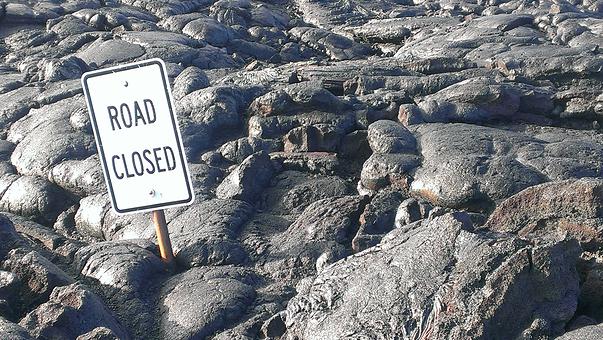Hawaii (Part 1)

Hawaii's Volcanoes National Park is located 48 kilometres southwest of Hilo, this is the home of Kilauea volcano, one of the most active volcanoes on earth. The chance to witness the primal process of creation and destruction makes this park one of the most popular visitor attractions in Hawaii and a sacred place for Native Hawaiians.
Here you'll find 240 kilometres of hiking trails through volcanic craters, scalded deserts and rainforests, as well as a museum, petroglyphs, a walk-in lava tube and two active volcanoes: Maunaloa, which last erupted in 1984 and Kilauea which has been erupting since January 3rd, 1983. The extraordinary natural diversity of the park was recognised in 1980, when it was named a World Biosphere site by UNESCO, and in 1987, when the park was again honoured as a World Heritage site.
Kilauea is sometimes called "the world's only drive-in volcano". This prolific volcano currently produces 230,000-600,000 cubic metres of lava per day, enough to resurface a 32-kilometre-long, two-lane road daily. As of January 1994, 198 hectares of new land have been created on Hawaii's Big Island. The current eruption may last another 100 years or stop tomorrow.
Pele, the volcano goddess who lives here, is very unpredictable. But the chance to watch Kilauea's blistering lava flows meet the sea (click here for Kalapana viewing update) is just one of the reasons to visit.
Here are other essential Park attractions:
- Kilauea Visitor Center Open daily: 7:45 am to 5 pmBegin your visit at the Kilauea Visitor Center where you can watch an hourly film from 9 am to 4 pm to introduce you to the park. Ranger talks are offered and ranger-guided activities can be scheduled. Pick up maps, learn about the park's hikes and get the latest eruption updates here.
- Crater Rim Drive Crater Rim Drive is the 17-kilometre drive that circles Kilauea Caldera. Driving around this loop will take you to the park's main attractions: the Kilauea overlook, Jaggar Museum, Halemaumau Crater, Devastation Trail, Kilauea Iki Crater Overlook and the Thurston Lava Tube.
- Halemaumau Crater Steam vents plume from this massive crater, known as the home of Pele, the volcano goddess. In 1967, this crater was filled with a lake of lava that eventually drained away. Great respect should be paid at this sacred site.
- Thurston Lava Tube (Nahuku) Walk through a 500-year old lava cave formed when an underground channel of molten lava drained from its cooled walls forming a massive, hollow chamber. A tropical rainforest awaits you at the end of the tube.
- Puu Oo Vent Currently Kilauea's lava activity isn't centered in its caldera (the large depression at the top of the volcano) but at the Puu Oo vent in the East Rift Zone. Puu Oo's lava floods underground tubes that empty dramatically into the sea. You can watch this spectacle at the end of Chain of Craters Road or get a closer look from the new Kalapana viewing site outside the park.
Bring food and water since there are no facilities in the park. Dress appropriately with shoes, long pants, and a jacket. Bring binoculars and a torch at night. And don't forget your camera.For your safety, please stay on marked routes, heed all warning signs, and stay out of restricted areas. There is a danger of harmful volcanic gases and unstable land in these areas.